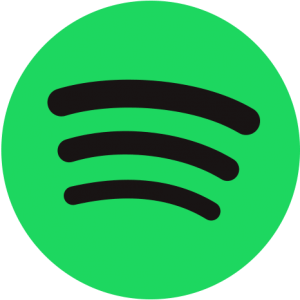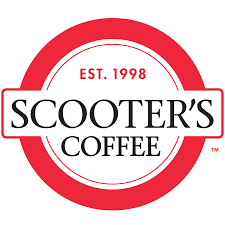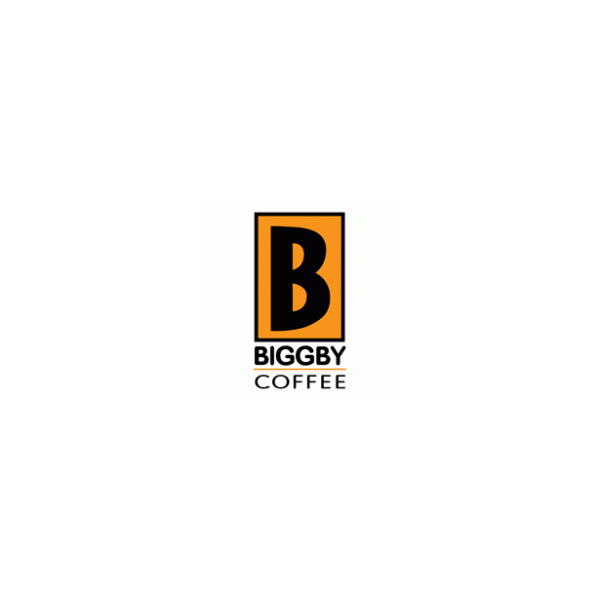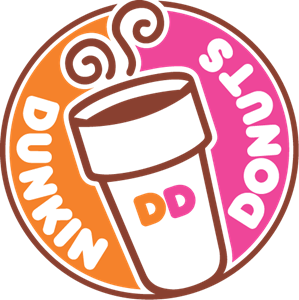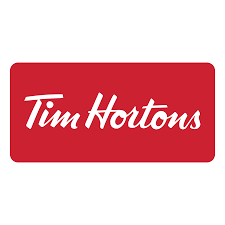Starbucks Franchise Cost Compared to 3 Other Coffee Franchises
This article is based on the video featured above, originally recorded for Vetted Biz Youtube Channel.
Starbucks Corporation or Starbucks is an American chain of coffee shops based out of Seattle, WA. As of November 2021, the company had 33,833 stores under the Starbucks brand in 80 countries. 15,444 of these were located in the United States. Out of Starbucks‘ U.S.-based stores, over 8,900 are company-operated, while the remainder are licensed operations.
Listen to this article
Jerry Baldwin, Zev Siegl, and Gordon Bowker founded Starbucks in 1971 at Seattle’s Pike Place Market. They sold the company to Howard Schultz in the 1980s. Schulz aggressively expanded the company – first in Seattle, then on the West Coast, before going countrywide and, finally, global. The company has been through Orin Smith, Jim Donald, Schulz again, and Kevin Johnson. As of April 2022, Howard Schulz is the CEO is of Starbucks for the third time.

Starbucks is the biggest coffee chain in the US and worldwide.
How Is Starbucks Positioned in the Food and Beverage Industry?
The Food and Beverage industry in the USA accounts for 13% of all manufacturing employment in the country. Around 1.46 million people are employees in this industry. Food franchises make up to 36% of the total franchise establishments in the USA and it is expected to create 1.6 million more jobs by 2027. The annual growth rate in the industry is around 2% and the EBITDA multiplier is around 3x for a single restaurant. Multiples can go up to 7x for 5+ restaurants.
One of the benefits of buying a coffee shop is that you require very little industry-specific knowledge. Many first-time business owners buy coffee shops and this industry is very popular among first-time franchise owners. There is a lot of information about general business practices as well as coffee shop specifics, so the learning curve is less steep. Any owner in the industry is expected to be knowledgeable in the specifics of coffee, trends, and coffee-related drinks.
What characterizes the coffee shop industry is the high turnover and discretionary spending. This industry has experienced a period of rapid expansion over the last decade. The existing competition in the industry is expected to intensify. Industry profitability is expected to increase, recovering from the decline early in the period. International expansion is anticipated to be the largest source of revenue and profit growth.

How to Start a Starbucks Franchise?
Unfortunately, Starbucks does not offer Franchises anymore but you can still open a licensed store!
Quoted from the company website, “Thanks to the huge success and dedication of its current Franchise Partners, Starbucks is not currently recruiting any new franchisees. You can still open up what is called a “licensed” Starbucks store.”
As Starbucks positions its licensing program, “It’s like renting the brand instead and the company’s likeness instead. You’ll need to pay a licensing fee rather than a franchising fee.” A licensed Starbucks costs around $315,000 for the license fee and some of the key fixtures. You can expect to invest $1,100,000 to open a new Starbucks location and significantly less for a kiosk in a not traditional location (airport, mall, etc.). You need $700,000 in liquid assets to be considered for a licensed store.
What Are the Financial Requirements for a Starbucks Licensed Store?
You need to pay the licensing fee of between $50,000 – $315,000 and you must have over $1,000,000 in liquid assets to be considered for a licensed store by Starbucks.
How Much Do Starbucks Locations Make?
Starbucks does not disclose any financials regarding franchises but we estimate that the average franchise makes $1,235,000. We are going to estimate $1,100,000 as the initial investment, but it can be much lower for a kiosk in an airport, hotel and other non-traditional locations.
Starbucks Estimated Average Store Sales: $1,235,000
| Initial Investment (midpoint) | %Profit margin of average franchise sales | Estimated profits | Time to recoup investment |
|---|---|---|---|
| $1,100,000 | 10% | $123,500 | 11.5 years |
| 15% | $185,250 | 8.5 years | |
| 20% | $247,000 | 7 years |
Based on the median sales estimated for Starbucks franchise locations, at an average of a 15% profit margin it will take around 8.5 years to recoup your investment. This is in the same range as other franchise opportunities. You may not get a 15% profit margin which would elongate getting a return on your investment.
Many factors affect the sales, costs, and expenses of your Franchised Store. Such as the Franchised Store’s size, geographic location, menu mix, and competition in the marketplace. The presence of other Coffee stores; the extent of market penetration and brand awareness that Starbucks stores have attained in your market. Also, the quality of management and service at your Franchised Store are major factors.

Is the Starbucks Franchise Profit Worth the Franchise Cost?
To assign a valuation multiple for Starbucks’ stores, we leverage estimates from DealStats, a database of acquired private company transactions sourced from U.S. business brokers and SEC filings. We reviewed the larger franchise industry as well as selling price multiples for larger systems where more transaction data is available.
When you go to sell a Starbucks store based on the median multiple of .36 and net sales estimate of $1,235,000, it would sell for $444,600. This is significantly lower than the estimated investment of $1,100,000.
However, as an owner of multiple Starbucks licenses, you do have the ability to make a profit. Coffee shop owners with over $5 million in sales have a median multiple of 0.86. So, if you had 10 Starbucks stores, amounting to $6,175,000 in sales, selling your multiunit franchise system would amount to $12,350,000. This will make you a profit of over $1 million as the investment would be $11,000,000.
The more franchises you own, the more earning potential you have as private equity firms become interested in your business instead of individual owner-operators.
Deals in this industry usually close for about 86% of the asking price.
How Many Starbucks Franchises Currently Operate?
As of November 2021, the company had 33,833 stores under the Starbucks brand in 80 countries. 15,444 of these were located in the United States. Out of Starbucks‘ U.S.-based stores, over 8,900 are company-operated, while the remainder is licensed. That puts Starbucks at 57% licensed stores with the other 43% being franchised locations. That said, a majority of Starbucks locations are actually located outside the US.

Starbucks has 32,660+ locations spanning 80 countries and territories on six continents.
What Are Starbucks’ Menu Offerings?
Starbucks sells merchandise such as branded mugs, tumblers, coffee presses, and scoops in addition to food. Certain locations that are branded “Starbucks Evenings” also offer beer, wine, and appetizers. In addition to selling its products at its stores, a wide range of items from Starbucks such as Starbucks-brand coffee, ice cream, and bottled coffee-based cold drinks are available at convenience stores and superstores all across the US market and in some other countries.
Which Brands Does the Starbucks Corporation Own?
In 2011, Starbucks acquired juice company Evolution Fresh for $30 million. Subsequently, Starbucks wanted to start a chain of juice bars starting around 2012. Its first store opened in San Bernardino, CA and plans for a store in San Francisco were to be launched in early 2013. Also in 2012, Starbucks began selling a line of iced Starbucks Refresher beverages that contain a green coffee extract. The beverages are fruit flavored and contain caffeine but are advertised as having no coffee flavor. Starbucks’s green coffee extraction process involves soaking the beans in water.
Ethos Water, a brand of bottled water owned by Starbucks since 2003, is sold throughout North America. In 2009, Starbucks introduced a line of instant coffee packets, called VIA Ready Brew. The first two VIA flavors were Italian Roast and Colombia.
How Has Starbucks (NASDAQ: SBUX) Performed in the Market?
Background
Starbucks Corporation (NASDAQ: SBUX), a premier name in the world of specialty coffee, continues to lead in its unique role as the top-notch roaster, marketer, and retailer of coffee. Founded back in 1985, this global powerhouse now operates across 82 markets and has an impressive portfolio of products and services.
Not only does Starbucks purchase and roast high-quality coffees for sale, but it also provides a variety of handcrafted beverages, including coffee, tea, and more. Furthermore, a selection of high-quality food items and snack offerings are also available through company-operated stores.
As we take stock of Starbucks’ global footprint at the close of the fiscal year 2022, it’s evident that the company has made significant strides. Boasting a whopping 35,711 stores worldwide, the U.S. and China are the primary contributors with 15,878 and 6,021 stores respectively. Another channel through which Starbucks extends its reach is by selling a variety of coffee and tea products, licensing its trademarks through licensed stores, grocery, and food service accounts.
What makes Starbucks so successful?
One cornerstone of Starbucks’ business model is its Starbucks® Rewards loyalty program. This ingenious program allows customers to accumulate “Stars,” which can later be redeemed for rewards. By the end of Q4 2022, the program has seen a surge in active memberships in the U.S., registering a remarkable increase of 16% year over year, amounting to 28.7 million members.
Starbucks’ financial performance for Q4 2022 reveals an exciting trajectory. Consolidated net revenues soared to $8.4 billion, marking a 3% increase, or 11% on a 13-week basis. However, the GAAP operating margin saw a decrease from 18.2% in the prior year to 14.2%, while the non-GAAP operating margin also dipped from 19.5% to 15.1%. Earnings per share, on a GAAP basis, were $0.76, down from $1.49 in the previous year, and non-GAAP earnings per share were at $0.81, a slight decrease from $0.99 in the prior year.
Looking at the broader picture, throughout fiscal year 2022, Starbucks observed an 8% increase in global comparable store sales, with North America and the U.S. leading the charge with a 12% increase. Yet, it wasn’t all smooth sailing; international comparable store sales saw a decline of 9%, with China experiencing a sharp decrease of 24% in comparable store sales. Despite these challenges, Starbucks made significant strides, with consolidated net revenues for the full year rising by 11% to a record-breaking $32.3 billion. Earnings per share were at $2.83 on a GAAP basis, down from $3.54 in the prior year, and at $2.96 on a non-GAAP basis, slightly down from $3.20 in the prior year. Both GAAP and non-GAAP operating margins experienced a decrease, landing at 14.3% and 15.1%, respectively, from 16.8% and 18.0% in the prior year.
Global Demand For Starbucks Coffee
However, despite these figures, the company leadership remains optimistic. Howard Schultz, the interim chief executive officer, points to the accelerating global demand for Starbucks coffee throughout the year and the early success of the U.S. Reinvention investments as reasons for optimism. Schultz believes these investments will not only touch and elevate every aspect of the Starbucks partner, customer and store experiences but also position Starbucks for accelerated, sustainable, long-term, profitable growth and value creation beginning in 2023.
Chief Financial Officer, Rachel Ruggeri, shares Schultz’s optimistic outlook. She lauds the company’s Q4 performance and anticipates that the guidance set for 2023 will pave the way for another year of record performance.
The fiscal year 2022 was a significant one for Starbucks. While there were certain challenges, most notably the COVID-19-related restrictions in China that affected sales, the company continued its march forward. With its robust business model, strategic investments, and dedicated leadership, Starbucks is poised to continue its trajectory of growth and profitability in the coming years.

What Are Some Alternatives to a Starbucks Franchise?
Scooter’s Coffee

- Scooter’s Coffee is an American chain of coffee stores specializing in quick service of espresso drinks, smoothies, and baked goods founded in 1998 and has grown to about 250 stores in the United States. Boundless Enterprises, a Nebraska-based LLC, serves as the parent company for Scooter’s. The parent company also owns two affiliate companies – Harvest Roasting and Boundless Operations.
A 15% profit margin would yield estimated annual profits of $88,158. This means it would take nearly 9-10 years to recoup your investment depending on whether your store is a kiosk or coffeehouse. While Scooter’s is a growing company and has seen increasing gross sales over the past six years, the 7-14 year timeframe that you could reasonably expect to recoup your initial investment may be a long time for one to wait.
Biggby

- Biggby is a community coffee shop chain with offerings of espresso beverages, sandwiches, baked goods, etc. Their franchise is generally operated from either a freestanding, storefront or strip center location or a prefabricated modular structure. Biggby has a very high focus on community integration, which they credit for their economic recovery after COVID. Robert P. Fish is a Co-Founder and Co-CEO of Biggby since April 2016 along with Michael J. McFall. Both of them are managing members of Global Orange, Biggby’s associates.
A 15% profit margin would mean it would take nearly 4.5 years to recoup your investment. Based solely on the Franchise Disclosure Document, Biggby may be an exciting investment opportunity for potential franchisees. The company presents itself as an up-and-coming player in the industry focused heavily on community values and engagement. It is offering a chance to be a part of an industry that has been long present. While still in its early stages, Biggby Coffee’s growth seems to be accelerating.
Dunkin’ Donuts

- Dunkin’ Donuts, also known as Dunkin’ and DD, is an American multinational coffee and doughnut chain. It was founded by Bill Rosenberg in Quincy, MA in 1950. It began rebranding as a “beverage-led company”, and was renamed Dunkin’, in 2019 with stores in the U.S. beginning to use the new name. The rebranding is to eventually be rolled out to all international locations. With approximately 12,900 locations in 42 countries, Dunkin’ is one of the largest coffee shop chains in the world. At the close of 2021, there were 8,000+ Dunkin’ franchised locations in the US. It is led in the US by David Hoffmann as CEO & President and former CEO Nigel Travis in the role of Executive Chairman.
Based on the median sales provided by Dunkin’s Drive-Thru franchise locations, at an average of a 15% profit margin it will take around 5.5 years to recoup your investment. This is in the same range as other franchise opportunities. You may not get a 15% profit margin which would elongate getting a return on your investment. Dunkin’ Donuts offers people the opportunity to be a part of a business that has high net sales and is rapidly expanding. It is impossible to understate the brand recognition that Dunkin’ has in the US market.
Tim Hortons

- Tim Hortons is a Canada-based company that sells coffee and other non-alcoholic beverages as well as baked goods, soups, and sandwiches. They were founded in 1984 in Ontario and have since grown, with 5,291 stores currently operating in the United States. Tim Hortons has recently pursued expansion into international markets, with 42 additional franchised locations in Latin America. With a large presence in North America, Tim Hortons is Canada’s largest quick-service restaurant chain. Tim Hortons is a subsidiary of Restaurant Brands International (RBI), a Canadian Corporation. Notably, RBI also owns Burger King, Popeyes Louisiana Kitchen, and Firehouse of America.
A 15% profit margin would yield estimated annual profits of $158,144. This means it would take nearly 11 years to recoup your investment. While Tim Hortons is a growing company and has seen increasing gross sales, the 8-14 year timeframe that you could reasonably expect to recoup your initial investment may be a long time for one to wait.
Conclusion
Overall, Starbucks is a very profitable company that operates both company-owned and licensed units. Even though the pandemic did take a toll on their earnings, their quarterly report shows that they were able to make a strong rebound in 2021 and will likely continue to do so. Although the cost of coffee has increased due to limited supplies, the fact that Starbucks dominates the coffee beverage industry helps mitigate these risks and renders it a strong force in the broader food and beverage industry.
The Food and Beverage industry does have other offerings you can look at. Find out more about those offerings in the Food and Beverage industry on VettedBiz. You can also look for other opportunities in the Coffee market.


